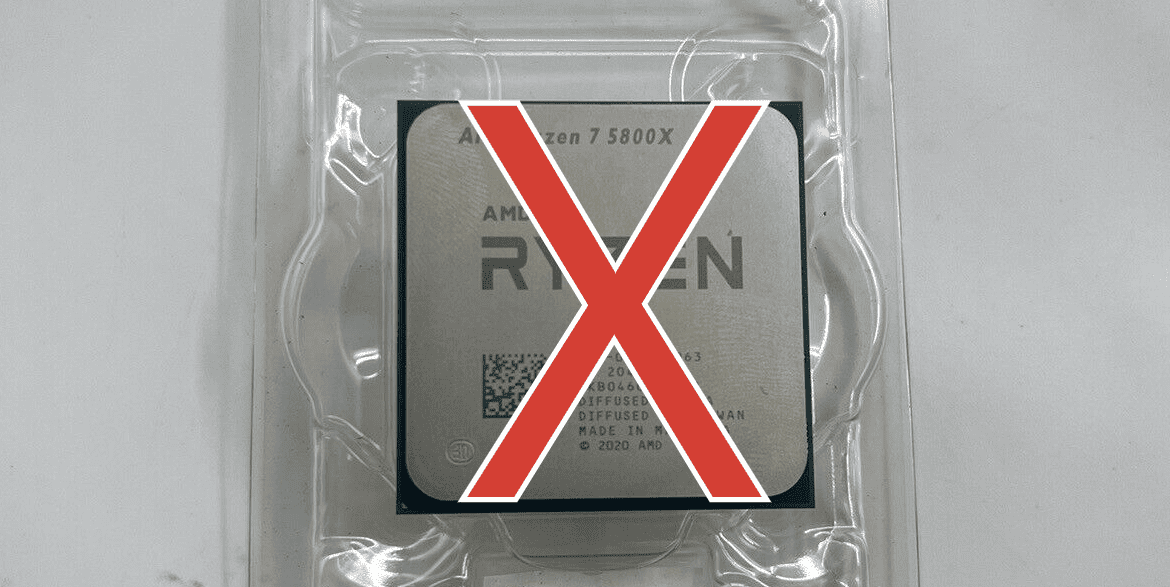Understanding the signs of a dead or dying CPU is crucial for maintaining your computer’s health, especially if your system is no longer turning on or if you smell something burning from your case. By recognizing these symptoms and knowing how to diagnose and address them, you can ensure your system runs smoothly and avoid potential data loss or hardware damage. Stay informed and proactive in your approach to CPU care. Diagnosing and resolving processor and motherboard issues requires a methodical approach, including physical inspections, BIOS diagnostics, and component testing. Understanding the signs of hardware failure and taking appropriate steps can prevent further damage and ensure the longevity of your system.
Here’s a step-by-step guide on how to determine if your CPU is dead, with a quick and easy test:
Step-By-Step Procedure For Diagnosing A CPU
1. Visual Inspection:

Begin by examining the CPU and its surroundings for physical damage. Look for burnt marks, melted components, or cracks on the CPU. Inspect the area for bulging or leaking capacitors and check the CPU pins for any damage. A flashlight can be helpful for a thorough inspection.
- Carefully examine the CPU and surrounding areas for any physical damage:
- Look for burnt marks, melted components, or cracks on the CPU itself.
- Check for bulging or leaking capacitors near the CPU.
- Inspect the pins for bent or broken ones.
- Use a flashlight to get a clear view of the components.
- If you notice any visual signs of damage, it’s highly likely the CPU is dead.
2. Power On and Listen for Beeps:
Turn on your computer and listen for beep codes. These beeps, emitted by the BIOS, are diagnostic tools signaling hardware issues. Different patterns indicate various problems, including a potential CPU failure. No beeps might also suggest a dead CPU.
- Turn on your computer and listen carefully for beep codes:
- These beeps are a diagnostic tool used by BIOS to signal hardware issues.
- Different beep patterns can indicate different problems, including a dead CPU.
- Consult your motherboard’s manual or the manufacturer’s website to interpret the beep codes.
- If you hear no beeps at all, it might also indicate a dead CPU, as the BIOS isn’t able to initialize.
3. Check for Overheating:

Carefully touch the CPU heatsink. If it’s excessively hot, it could indicate a failing CPU or a cooling system issue.
- Touch the CPU heatsink or top of the CPU carefully to feel if it’s excessively hot:
- Use caution as it may be very hot.
- If it’s overheating, it could be a sign of a failing CPU or a problem with the cooling system.
- Observe Symptoms: Look for reboots, warning beeps, and fan behavior indicative of overheating.
- Temperature Monitoring Software: Use software like SpeedFan to monitor CPU temperature.
4. Test with a Known Working CPU (if possible):
If possible, swap your CPU with a known working one. If the computer boots up with the replacement, it’s likely your original CPU is dead.
- If you have access to another working CPU that’s compatible with your motherboard:
- Temporarily swap it with your current CPU.
- If the computer boots up normally with the replacement CPU, it confirms that your original CPU is indeed dead.

5. Professional Diagnosis:
When in doubt, consult a computer technician for a more thorough diagnosis.
- If you’re still unsure, seek professional help from a computer technician or repair service:
- They can perform more thorough tests using specialized tools and equipment to accurately diagnose the problem.
Additional Notes:
- While conducting these tests, remember to exercise caution and disconnect power before touching any internal components.
- If you’re not comfortable working with computer hardware, it’s best to seek professional assistance to avoid further damage.
Key Takeaways
- Symptoms of a Dead CPU: Look for no functionality, no POST, overworking fans, rapid shutdowns, screen freeze, and blue-death screen.
- Diagnosing a Dead CPU: Check for visible damage, listen for beep codes, and perform a partial process of elimination.
- Signs of a Dying CPU: Watch out for random shutdowns, freezing, and BSODs.
- Isolating the Problem: Test your CPU on another system or try a known good CPU on your system.
- Dealing with Overheating: Monitor CPU temperature and ensure proper cooling.
- Physical Inspection: Check for burn damage or bent pins on the CPU.
Understanding CPU Failures
A non-responsive computer, especially when the power supply is functional, often points to a CPU issue. Other signs include no POST during boot-up, fans running at maximum power, rapid shutdowns, screen freezes, and the blue-death screen. These symptoms can be caused by various factors, including electrical overload, overheating, or physical damage like bent pins.
The Central Processing Unit (CPU) is the heart of your computer, orchestrating all its functions. But what happens when this vital component fails? Reddit users and tech experts alike have shared insights on how to recognize a dead or dying CPU.
Identifying A Failed / Failing Computer Processor
A computer’s processor, the heart of its operations, can succumb to failure due to prolonged use or overheating. Recognizing the signs of a failing processor is crucial for timely intervention and repair. When you power on your computer, pay attention to any unusual beeps or error messages. These signals, often issued by the motherboard, can indicate processor issues. For a more definitive test, connect the processor to a compatible and functioning test computer. Remember, handling internal hardware requires a certain level of expertise to avoid further damage.
Symptoms of a Dead CPU
When your computer suddenly stops functioning, it’s crucial to determine whether the issue lies with the CPU. Key symptoms of a dead CPU include a complete lack of functionality despite a working power supply, failure to perform the Power-On Self Test (POST), fans operating at full speed without regulation, immediate shutdowns after powering on, persistent freezing at startup, and the dreaded blue screen of death (BSOD). These signs are critical indicators that your CPU might have ceased functioning.
- Zero Functionality: A non-responsive computer, despite a functional power supply unit (PSU), often points to a dead CPU.
- No POST (Power-On Self Test): Failure to display the POST screen upon boot-up is a red flag.
- Overworking Fans: Fans running at maximum power indicate a lack of CPU regulation.
- Rapid Shutdown: Immediate shutdown after powering on suggests CPU issues.
- Random Shutdowns and Freezing: These could be early signs of CPU failure.
- BSODs (Blue Screen of Death): Frequent BSODs might indicate CPU degradation.
- Screen Freeze: Persistent freezing at the loading or home screen can be due to CPU failure.
- Blue-Death Screen: This infamous error screen often signals CPU problems.
Diagnosing a Dead CPU
Isolating CPU Problems To confirm a CPU issue, test it on a compatible, functioning PC. If the problem persists, it’s likely the CPU. Also, ensure your BIOS is updated for proper CPU compatibility.
- Visible Damage: Check your motherboard for signs of electrical overload, like scorch marks around the CPU socket.
- Sound: Listen for beep codes during the POST process. No beeps with a non-functional screen often mean CPU issues.
- Partial Process of Elimination: Disconnect all but essential components and listen for long beeps, indicating functioning components.
Interpreting Continuous Beep Sounds
A continuous beep sound during startup often points to memory or other hardware issues. Troubleshooting involves checking power sources, reseating memory sticks, and consulting BIOS beep codes for specific diagnostics.
Will A Bad CPU Cause No Video?
A computer will not function without a properly working CPU, so if your CPU isn’t working you won’t get any video output. The computer won’t be able to get data from any of the drives, peripherals, or cards (including the video card). No signal will be sent to your screen and no programs will be able to run.
Replacing a Bad Processor
If you’ve identified a processor as being bad, it’s time to replace it. First turn off and unplug everything from the wall. Make sure you’re properly grounded and then:
- Fan and Heatsink Removal: Unplug and unlatch the processor fan and heatsink.
- Processor Removal and Replacement: Lift the locking lever, remove the processor, and replace it with a new one, ensuring proper alignment and secure locking.
- Reassembly: Apply thermal compound to the new processor, reattach the heatsink/fan, and secure the locking clips.
Dealing with Overheating
When handling CPU overheating issues monitor your CPU’s temperature using software like CoreTemp. Ensure your computer has adequate cooling and proper airflow. Check the thermal paste application on the CPU for effective heat dissipation.
- Monitor CPU Temperature: Use software like CoreTemp to check for overheating.
- Adequate Cooling: Ensure proper airflow and thermal paste application.
Scenarios, Solutions, And Test Procedures
Practical Scenarios
- Scenario 1: A Reddit user experienced no POST and rapid shutdowns. Solution: Reseating the CPU and clearing the CMOS resolved the issue.
- Scenario 2: Another user faced screen freezes. Solution: Checking for overheating and ensuring proper cooling helped. To check overheating look for:
- Monitor for Crashes and Errors: Frequent crashing or shutdowns can indicate overheating.
- Physical Checks: A hot computer exterior and loud fan operation are common overheating signs.
Physical Inspections & Test Procedures
Before anything else check for burn damage and bent pins on both the CPU and motherboard. If there is visible physical signs of damage, then you will likely know what is wrong. If there are no obvious signs of physical damage you can run through these diagnostic procedures based on what the issue might be:
TEST 1: Checking Processor For Errors or Damage
- Initial Power Test: Turn off and then power on your computer. Note any beeps or error messages displayed.
- Consult Manufacturer Documentation: Visit the computer or motherboard manufacturer’s website for guidance on beep codes or error messages. Follow any recommended diagnostic steps.
- Internal Inspection: Disconnect the power (and battery for laptops), and remove the access panel. This usually involves unscrewing or unclipping the panel.
- Processor and Heatsink Examination: Carefully remove and reseat the heatsink on the processor. Unclip the processor and inspect for visible damage like burn marks, a telltale sign of failure.
- Check Connections: Ensure all internal power and component cables are securely connected. Reseat the memory modules by unclipping and reclipping them.
- Final Test: After replacing the processor and heatsink, power on the computer. If issues persist, further investigation is needed.
TEST 2: Checking Processor on a Secondary Computer
- Preparation: Disconnect power from both the test and suspect computers. Remove the heatsink and processor from both.
- Swap Test: Install the suspect processor and heatsink in the test computer, ensuring compatibility.
- Boot Test: Power on the test computer. Failure to boot or the same error beeps strongly suggest a dead CPU.
TEST 3: Reseating The Processor
- Shutdown and Disconnect: Power off your computer and disconnect it from the power source.
- Access Internal Components: Remove the case cover, typically secured by screws or a clip mechanism.
- Processor and Heatsink Access: Locate and prepare to remove the heatsink and processor fan, usually near the RAM and northbridge.
- Static Precautions: Ground yourself by touching the chassis or using an anti-static wristband.
- Heatsink Removal: Disconnect the fan cable if applicable and remove the heatsink assembly.
- Processor Reseating: Lift the lever securing the processor, remove it, and then carefully reseat it, ensuring alignment with the socket.
- Reassembly: Reverse the steps to reinstall the heatsink, fan, and case cover.
TEST 4: Identifying A Bad Motherboard
Determining if your motherboard is bad or burned out involves a few key steps:
- Physical Inspection: Look for signs of damage like smoke residue or charred circuitry. Pay special attention to the capacitors for any signs of bulging or leakage.
- Power Test: Ensure the power supply is correctly set and functioning. A non-responsive computer, especially with fans running but no boot, often points to motherboard issues.
- Diagnostic Beep Codes: Listen for beep patterns when powering on. These codes vary by manufacturer and can indicate specific hardware failures.
- Hardware Minimalism: Remove all non-essential hardware and test the system.
- BIOS Reset: Perform a BIOS reset using the jumper and load fail-safe defaults.
- Display Anomalies: Random characters or a halted display can signal a motherboard problem, especially if a dedicated video card reseating doesn’t resolve the issue.
TEST 5: Checking Processor Temperature
- Access BIOS: Restart your computer and enter BIOS by pressing the designated key (often F10, F2, or Delete).
- Temperature Reading: Locate the CPU temperature reading in the BIOS. Ideal temperatures are below 68°F (20°C), with a maximum threshold of 212°F (100°C).
- CPU Heat Check: If you suspect your processor is getting too hot, after running it for a short while turn everything off, unplug the power cable from the wall, then remove the heatsink. Touch the CPU. Excessive heat indicates potential overheating issues.
TEST 6: Troubleshooting Monitor Issues
- Basic Checks: Ensure power and video connections are secure and the computer is running.
- Component Testing: Swap cables and monitors to isolate the problem component.
- Advanced Diagnostics: Note beep codes during startup and consult manufacturer guidelines for interpretation.
- Video Card Inspection: Check and reseat the video card, replacing if necessary.
Latest Technological Advancements
Recent developments in cooling technology help prevent CPU overheating. Manufacturers are also focusing on creating more durable CPUs, capable of withstanding physical stress and high temperatures.
- Improved Cooling Solutions: Advances in cooling technology help prevent CPU overheating.
- More Durable CPUs: Manufacturers are focusing on making CPUs more resilient to physical damage.
FAQs
How can I tell if my CPU is dead?
Look for symptoms like no functionality, no POST, overworking fans, rapid shutdowns, screen freeze, and blue-death screen. Also, perform physical inspections for burn damage or bent pins.
What should I do if my CPU is dead?
Replace the CPU. Repairing a CPU is typically beyond the average user’s capability.
Can a CPU die of old age?
Generally, no. CPUs can last many years, and sudden failures are often due to electrical events or extreme conditions.
What causes a CPU to die?
Overheating, electrostatic discharge, and physical damage like bent pins are common causes.
How do I revive a dead CPU?
Reviving a dead CPU is not usually possible. Consult the manufacturer for warranty options or consider replacing it.







